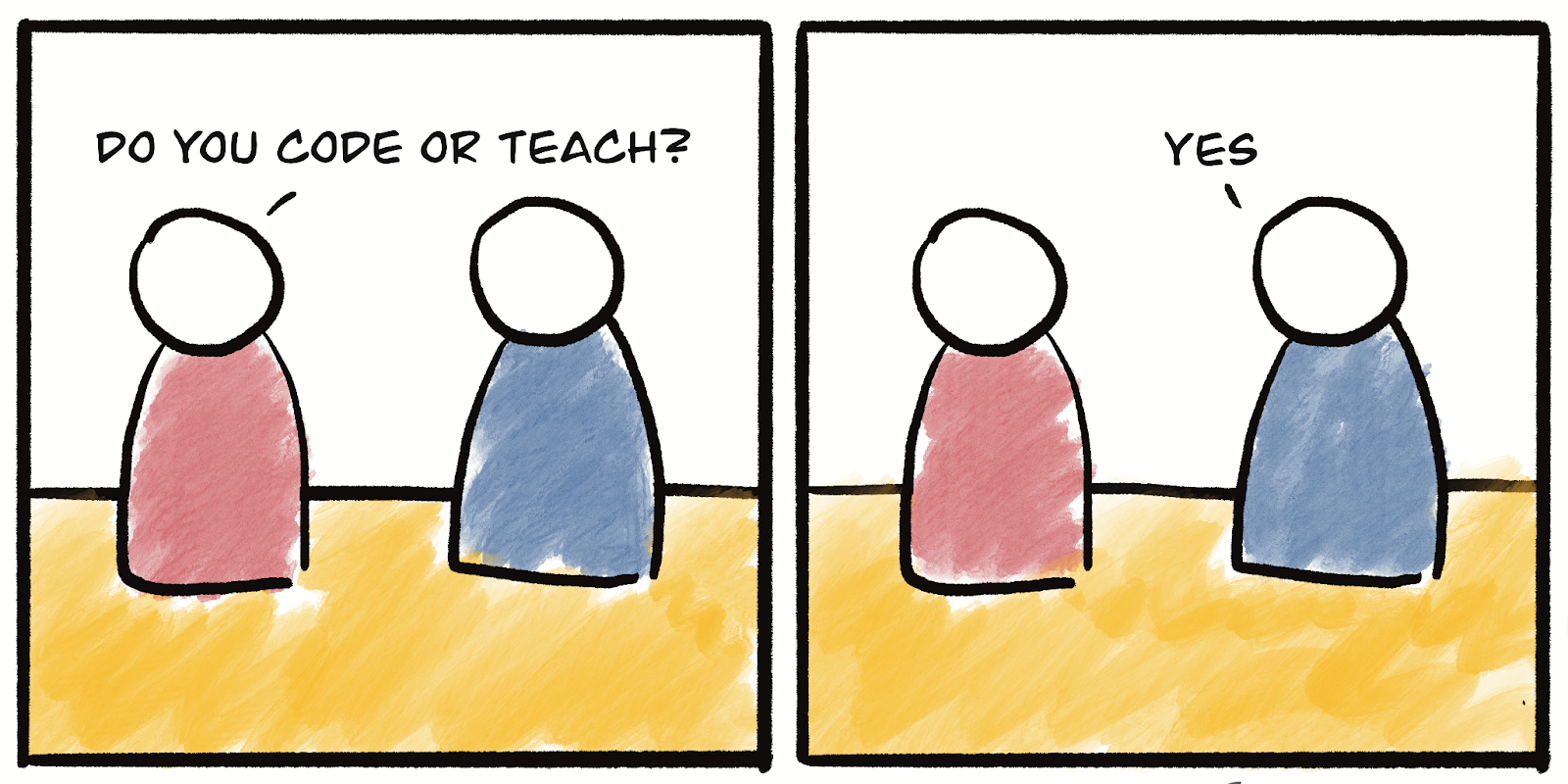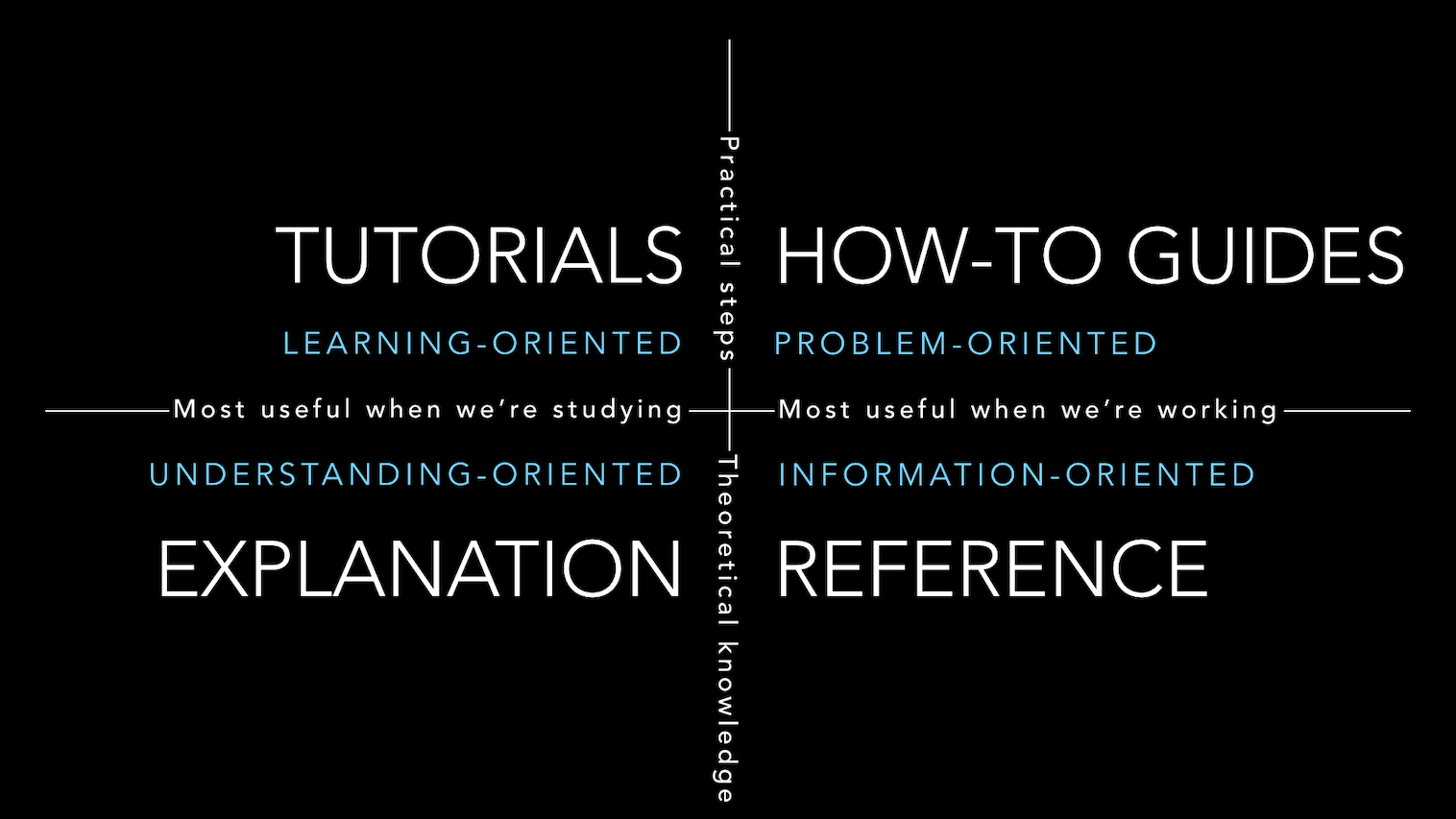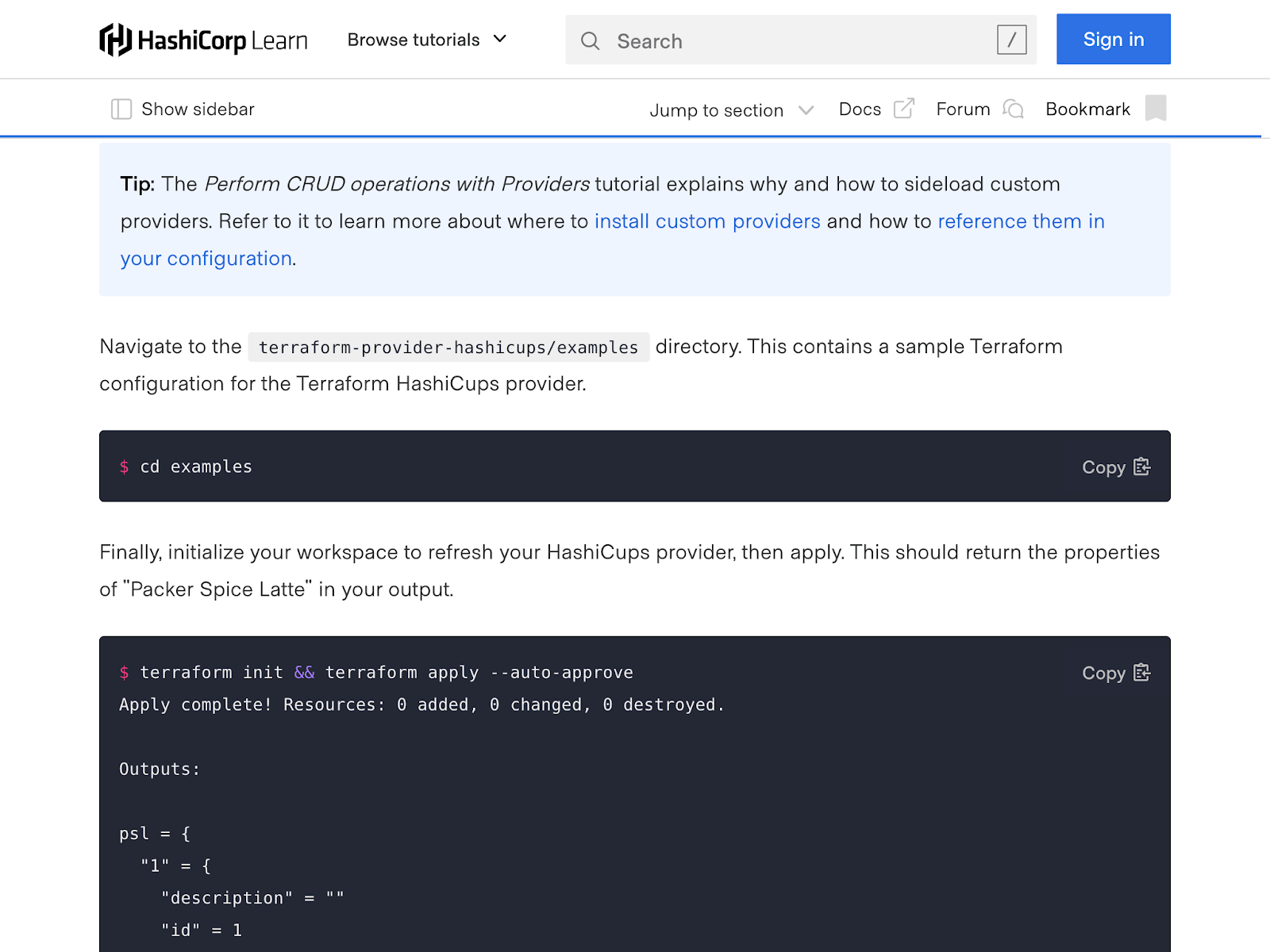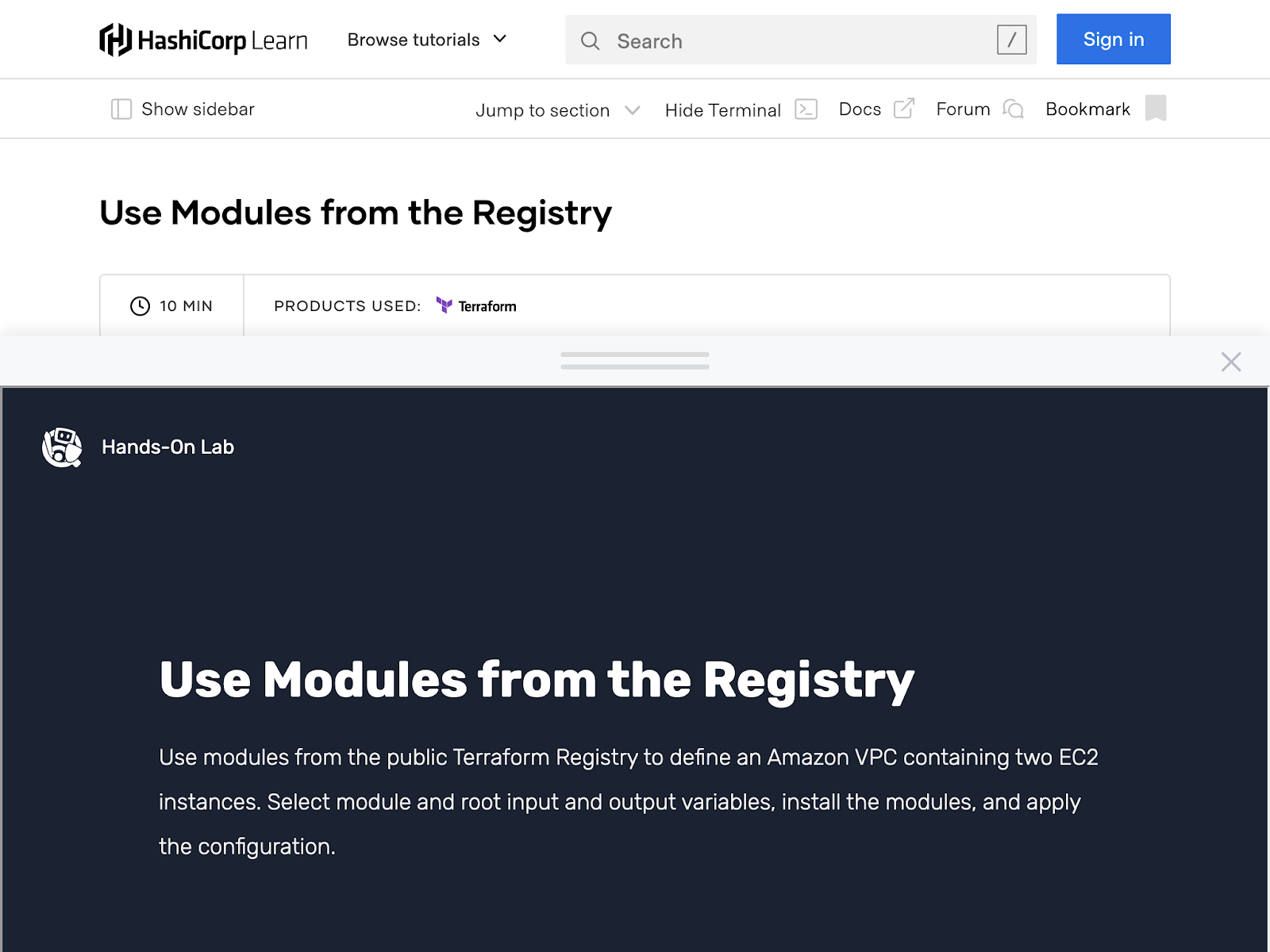What Does an Education Engineer Actually Do
Over Thanksgiving, my family had questions about what I do at work. In previous years, they were satisfied with “software engineer” — I made websites and apps. They weren’t sure what an education engineer actually does.

At HashiCorp, education engineers design scenarios that emulate problems DevOps engineers may run into and guide them through a solution. As part of the Terraform Education team, these scenarios may come in the form of common use cases, like how to spin up a Kubernetes cluster in your favorite cloud, or highlighting new features practitioners may find useful, like curating public providers and modules within Terraform Cloud. Since education engineers need to generate real world examples and their solutions, they’re expected to have real experience and technical knowledge. If you have prior experiences in advocating for and implementing blue-green deployments, you’re intimately aware of both the benefits and hurdles.
In the “grand unifying theory of documentation”, education engineers help practitioners develop a mental model by creating content that’s learning and problem-orientated. The Terraform Get Started collections show users Terraform’s immediate value by having users provision, modify and destroy a compute instance through code. Once users realize how to use the product, they may navigate to content that covers the specific use case they’re trying to address. By consuming content that’s learning and problem-orientated, practitioners are better able to dive into and navigate the documentation to solve their unique problems.

While all of the content lives in our education platform, Learn, practitioners can engage with it in different ways:
Tutorials. The majority of the content we create are tutorials, which guide practitioners through a scenario. Most tutorials include a set of commands and explanations that practitioners can copy and paste into their terminal. We design the scenarios so that on completion, practitioners can apply what they learned to a problem they’re facing. Tutorials serve as our foundation — all additional content (e.g. interactive labs, workshops) must stem from a tutorial. This gives practitioners an opportunity to review and re-run sections they’re stuck with while running through the lab or workshops.
We select new topics for tutorials from a combination of metrics that help us assess whether a tutorial could be popular. This serves as an imperfect proxy that measures whether users find the scenario both relevant and engaging. For some tutorials, we work closely with engineers, product managers, and other stakeholders to serve as the voice of the practitioner. Finally, the team rigorously tests and reviews all tutorials — an average tutorial review cycle has 100+ suggestions)!

Interactive Labs. For some tutorials, we create interactive labs with Instruqt and then embed these labs into our tutorials. This enables practitioners to experiment with HashiCorp product features without having to install any dependencies.

Workshops. During HashiConf, HashiCorp main conferences, the education team hosts hands-on workshops. In these workshops, we guide practitioners through interactive labs while answering questions they may have about the feature/product or the scenario itself.
During HashiConf Global 2021, we guided attendees through building a golden image pipeline with HCP Packer, a new HashiCorp product offering that was announced the day prior. By offering a workshop shortly after the product launch, we were able to effectively get users to try the product.
In addition to the content on Learn, as an education engineer, we’re encouraged to work on problems that the community struggles with. While working with Terraform, I noticed that it was difficult to quickly get a graphical overview of changes. This is especially important if you’re managing a large number of resources, cross multiple regions and providers. When I proposed a visualizer solution that could address this concern, my manager, Judith, encouraged me to work on it even though it wouldn’t directly increase the number of visitors to Learn. When I shipped the first version, Kerim, a developer advocate, encouraged me to speak about my experiences building it during HashiTalks: Build. Rover wouldn’t exist without their support and encouragement.
If this experience resonates with you and you enjoy working with amazing people, the HashiCorp Education team is hiring! Feel free to DM me @im2nguyen if you want to learn more.
Additional Resources
Geoffrey, Director of Product Education Engineering at HashiCorp, wrote an insightful article titled What Does an Education Engineer Do?. In it, he describes the skills and expectations for each level of education engineers.